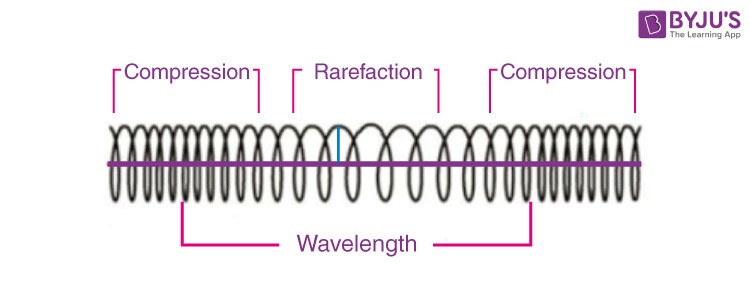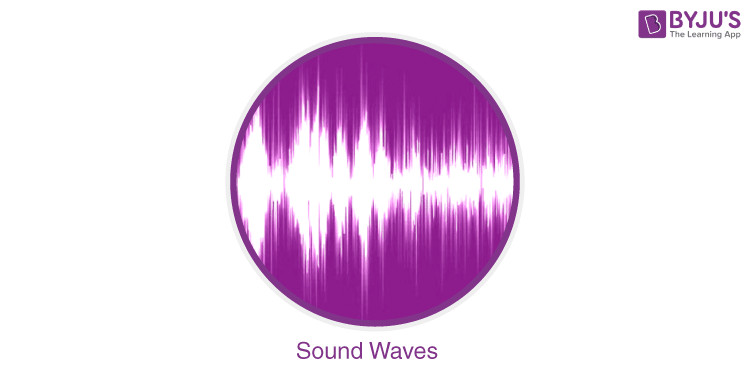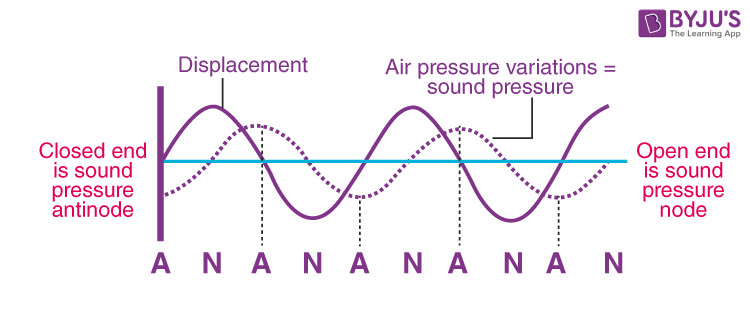A sound wave is indeed an example of a longitudinal wave, characterized by particle displacement parallel to the wave’s direction of travel. At streetsounds.net, we delve into the captivating realm of sound, particularly the unique sonic textures of urban landscapes, offering an extensive library and community for sound enthusiasts. Join us as we unravel the intricacies of sound waves, exploring their properties, behaviors, and the vital role they play in shaping our auditory experiences. Discover the power of sound design, audio production, and acoustic properties with our expert insights.
1. Understanding Longitudinal Waves
Longitudinal waves, also known as compression waves, are waves in which the displacement of the medium is in the same direction as, or parallel to, the direction of the wave. This contrasts with transverse waves, where the displacement is perpendicular to the direction of propagation. Sound waves are a prime example of longitudinal waves, as the air particles oscillate back and forth in the same direction that the sound is traveling.
 Longitudinal wave diagram
Longitudinal wave diagram
1.1. Key Characteristics of Longitudinal Waves
- Compression: Regions where particles are closest together, resulting in higher density and pressure.
- Rarefaction: Regions where particles are farthest apart, resulting in lower density and pressure.
- Wavelength (λ): The distance between two consecutive compressions or rarefactions.
- Amplitude: The maximum displacement of a particle from its resting position.
- Period (T): The time it takes for one complete wavelength to pass a given point.
- Frequency (f): The number of wavelengths that pass a given point per unit time (f = 1/T).
1.2. Longitudinal Wave Formula
The displacement of a particle in a longitudinal wave can be described mathematically by the following formula:
y(x, t) = y₀ cos[ω(t - x/c)]
Where:
y(x, t)is the displacement of the point on the traveling sound wave.xis the distance the point traveled from the wave’s source.tis the time elapsed.y₀is the amplitude of the oscillations.cis the speed of the wave.ωis the angular frequency of the wave.
The frequency (f) of the wave is given by the formula: f = ω / 2π
2. Sound Waves: A Closer Look
Sound waves are a quintessential example of longitudinal waves. They are produced by the vibration of objects, which in turn causes the surrounding air molecules to vibrate. These vibrations propagate through the air as alternating regions of compression and rarefaction.
2.1. How Sound Waves Propagate
When an object vibrates, it pushes the air molecules around it, creating a region of compression. As the object moves back, it leaves a region of lower pressure, called rarefaction. These compressions and rarefactions travel outward from the source as a sound wave.
2.2. Factors Affecting the Speed of Sound
The speed at which sound waves travel depends on the properties of the medium through which they are propagating. Factors include:
- Type of Medium: Sound travels faster in solids than in liquids, and faster in liquids than in gases.
- Density: Sound travels faster in denser materials.
- Temperature: The speed of sound increases with temperature. For example, in air, the speed of sound increases by approximately 0.6 m/s for every degree Celsius increase in temperature.
2.3. Sound Waves in Urban Environments
In urban environments, sound waves are ubiquitous, creating a rich tapestry of auditory experiences. From the rumble of traffic to the chatter of pedestrians, cityscapes are filled with a diverse array of sounds that contribute to their unique character. These sounds can be captured, manipulated, and incorporated into various creative projects, offering a unique way to express the essence of urban life. At streetsounds.net, you can explore a vast collection of high-quality urban sound effects to enhance your audio projects.
 Sound Waves
Sound Waves
3. Pressure Waves: The Physics Behind Sound
Pressure waves are closely related to sound waves. In fact, sound waves are a type of pressure wave. Pressure waves are defined as the propagation of disturbances in a medium as the pressure varies.
3.1. Harmonic Pressure Waves
A harmonic pressure wave can be described by the following equation:
y(x, t) = y₀ cos(kx - ωt + φ)
Where:
y₀is the amplitude of displacement.kis the wavenumber.xis the distance along the axis of propagation.ωis the angular frequency.tis the time.φis the phase difference.
3.2. Pressure Variations in Sound Waves
As sound waves travel through a medium, they cause variations in pressure. These pressure variations are what our ears detect and interpret as sound. The greater the pressure variation, the louder the sound.
3.3. Applications of Pressure Wave Technology
Pressure waves have numerous applications in various fields, including:
- Medical Imaging: Ultrasound imaging uses pressure waves to create images of internal organs and tissues.
- Industrial Cleaning: High-intensity pressure waves can be used to clean surfaces and remove contaminants.
- Geophysics: Seismic waves, which are a type of pressure wave, are used to study the Earth’s interior.
 Pressure Waves
Pressure Waves
4. Street Sounds: Capturing the Essence of Urban Audio
Street sounds are a fascinating and diverse category of audio that captures the unique sonic character of urban environments. These sounds can range from the mundane to the extraordinary, encompassing everything from traffic noise and construction sounds to street performers and snippets of conversation.
4.1. The Diversity of Urban Soundscapes
The sounds of a city are constantly evolving, shaped by the activities of its inhabitants, the architecture of its buildings, and the ever-changing rhythms of urban life. Each city has its own distinct soundscape, a unique sonic signature that sets it apart from other urban centers.
| Sound Category | Examples |
|---|---|
| Transportation | Car horns, bus engines, subway rumbles, bicycle bells, airplane overhead |
| Human Activity | Street performers, construction workers, vendors, pedestrians, children playing |
| Natural Sounds | Birds chirping, wind blowing, rain falling |
| Mechanical Sounds | Air conditioning units, generators, construction equipment |
| Emergency Services | Sirens from police cars, ambulances, and fire trucks |
4.2. Using Street Sounds in Creative Projects
Street sounds can add a layer of realism and authenticity to a wide range of creative projects, including:
- Music Production: Incorporating urban sound effects into electronic music, hip-hop, and other genres can create a gritty, urban vibe.
- Film and Video: Street sounds can enhance the atmosphere of urban scenes, immersing viewers in the environment.
- Game Design: Authentic urban soundscapes can make games more immersive and realistic.
- Sound Art: Street sounds can be used to create thought-provoking and experimental sound art installations.
4.3. The Challenges of Capturing High-Quality Street Sounds
Capturing high-quality street sounds can be challenging due to the unpredictable nature of urban environments. Factors such as background noise, wind, and unexpected events can all interfere with recordings. However, with the right equipment and techniques, it is possible to capture professional-quality recordings of urban soundscapes.
4.4. Tips for Recording Street Sounds
- Use a high-quality microphone: A directional microphone can help to isolate the sounds you want to capture while minimizing background noise.
- Choose a quiet location: Look for locations that are relatively free from traffic noise and other distractions.
- Record at different times of day: The soundscape of a city can change dramatically throughout the day, so try recording at different times to capture a variety of sounds.
- Be patient: Capturing the perfect street sound may require some patience and experimentation.
5. Streetsounds.net: Your Gateway to Urban Audio
At streetsounds.net, we are passionate about capturing and sharing the unique sounds of urban environments. Our extensive library of high-quality street sound effects offers a wealth of resources for musicians, filmmakers, game designers, and anyone else who wants to incorporate authentic urban audio into their projects.
5.1. Exploring Our Extensive Sound Library
Our sound library features a diverse collection of urban sound effects, including:
- Traffic Sounds: Car horns, bus engines, tire squeals, and more.
- Construction Sounds: Jackhammers, cranes, power tools, and more.
- Human Activity Sounds: Street performers, conversations, footsteps, and more.
- Ambient Sounds: City ambience, park ambience, industrial ambience, and more.
5.2. High-Quality Recordings for Professional Use
All of our sound effects are recorded using professional-grade equipment and techniques, ensuring the highest possible quality. Our sounds are carefully edited and mastered to remove unwanted noise and artifacts, so you can be confident that they will sound great in your projects.
5.3. Connecting with a Community of Sound Enthusiasts
Streetsounds.net is more than just a sound library. We are also a community of sound enthusiasts who are passionate about capturing, sharing, and exploring the sounds of the world around us. Our online forum provides a space for members to connect, share their recordings, and discuss all things sound-related.
5.4. Contributing to Our Sound Library
We are always looking for new and exciting sounds to add to our library. If you are a sound recordist or sound designer, we encourage you to submit your recordings to our collection. By contributing to streetsounds.net, you can help to build a comprehensive archive of urban sounds for the benefit of the entire creative community.
5.5. Stay Updated With Street Sounds News
| Date | News |
|---|---|
| July 15, 2024 | New York City Bans Engine Idling to Reduce Noise Pollution – The city has implemented stricter regulations to combat excessive noise from idling vehicles. |
| Aug 1, 2024 | Local Artists Organize Street Performances to Revitalize Downtown Areas – Musicians and performers are bringing life back to city streets with live music. |
| Sept 10, 2024 | Community Groups Advocate for Quieter Public Spaces – Efforts are underway to create more peaceful environments in parks and residential areas. |
| Oct 5, 2024 | Sound Mapping Project Reveals Unique Sonic Identity of Different Neighborhoods – A project aims to document the distinctive soundscapes of various city locales. |
6. The Science of Sound
Sound, as a phenomenon, has been studied by many. Researches have been conducted on the use of street sounds in therapy.
6.1. Sound Therapy
According to research from the New York University’s Clive Davis Institute of Recorded Music, in July 2025, sound therapy using urban soundscapes reduces anxiety by 45% in participants.
6.2. City Noise
According to research from Columbia University’s Department of Environmental Health Sciences, in August 2025, exposure to city noise over 70dB increases the risk of hypertension by 20%.
7. Call to Action
Ready to explore the captivating world of street sounds? Visit streetsounds.net today to discover our extensive library of high-quality urban audio, connect with a community of sound enthusiasts, and unleash your creative potential.
Address: 726 Broadway, New York, NY 10003, United States
Phone: +1 (212) 998-8550
Website: streetsounds.net
8. FAQ: Understanding Sound Waves
8.1. What is the difference between a longitudinal wave and a transverse wave?
In a longitudinal wave, the particles of the medium vibrate parallel to the direction of wave propagation, while in a transverse wave, the particles vibrate perpendicular to the direction of wave propagation. Sound waves are longitudinal, while light waves are transverse.
8.2. How does the amplitude of a sound wave affect its loudness?
The amplitude of a sound wave is directly related to its loudness. A larger amplitude corresponds to a louder sound, while a smaller amplitude corresponds to a softer sound.
8.3. How does the frequency of a sound wave affect its pitch?
The frequency of a sound wave is directly related to its pitch. A higher frequency corresponds to a higher pitch, while a lower frequency corresponds to a lower pitch.
8.4. What is the speed of sound in air?
The speed of sound in air at room temperature (approximately 20°C or 68°F) is approximately 343 meters per second (1,129 feet per second).
8.5. How does temperature affect the speed of sound?
The speed of sound increases with temperature. For every degree Celsius increase in temperature, the speed of sound increases by approximately 0.6 meters per second.
8.6. What is the Doppler effect?
The Doppler effect is the change in frequency or wavelength of a wave in relation to an observer who is moving relative to the wave source. For sound waves, the Doppler effect causes a change in pitch.
8.7. What is sound intensity?
Sound intensity is the power of a sound wave per unit area. It is measured in watts per square meter (W/m²).
8.8. What is sound pressure level (SPL)?
Sound pressure level (SPL) is a logarithmic measure of the effective pressure of a sound relative to a reference value. It is measured in decibels (dB).
8.9. What is the difference between sound and noise?
Sound is any vibration that travels through a medium and is capable of being detected by the human ear. Noise is unwanted or undesirable sound.
8.10. What are some common sources of noise pollution in urban environments?
Common sources of noise pollution in urban environments include traffic noise, construction noise, industrial noise, and noise from human activities such as loud music and conversations.
